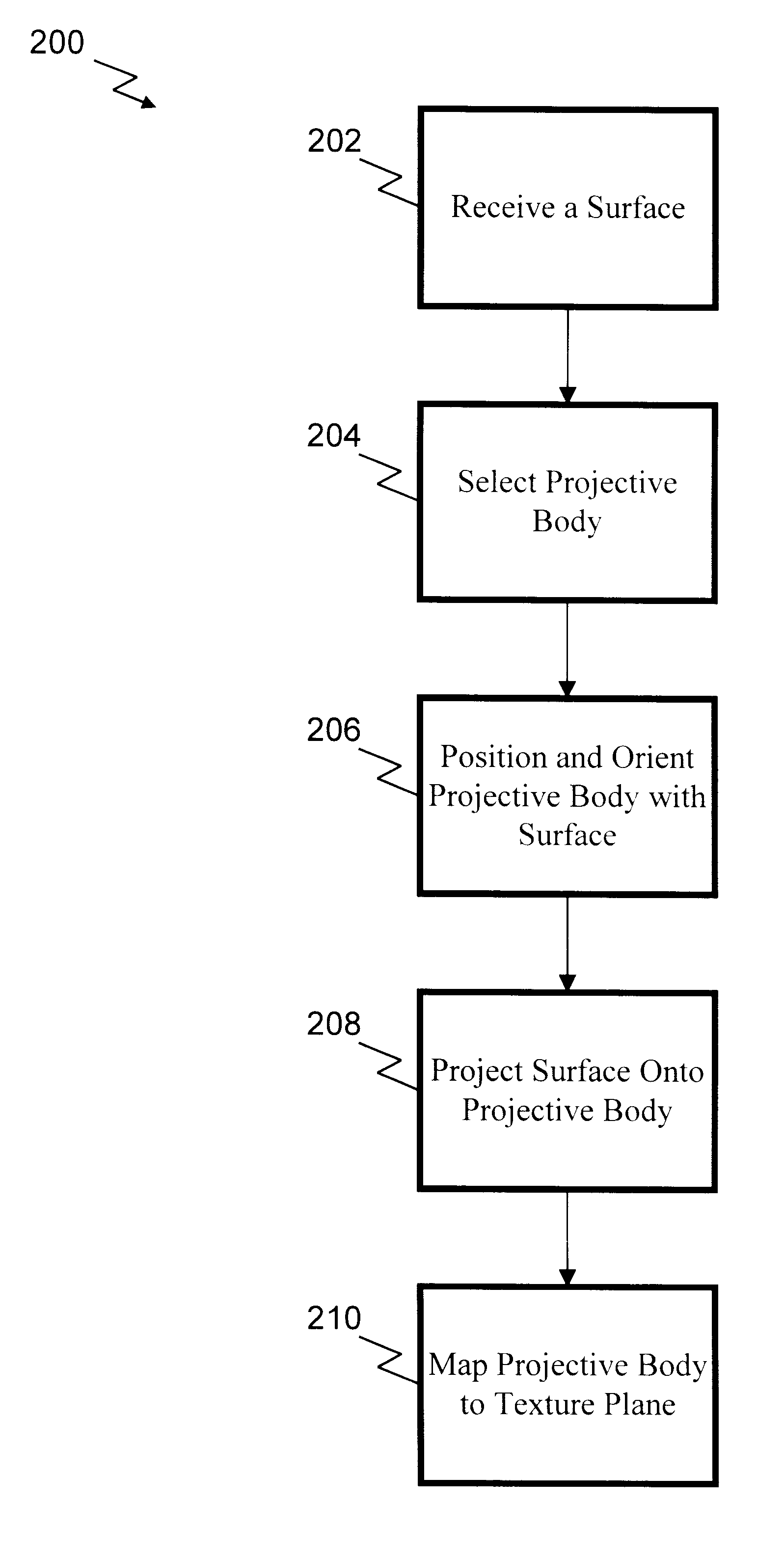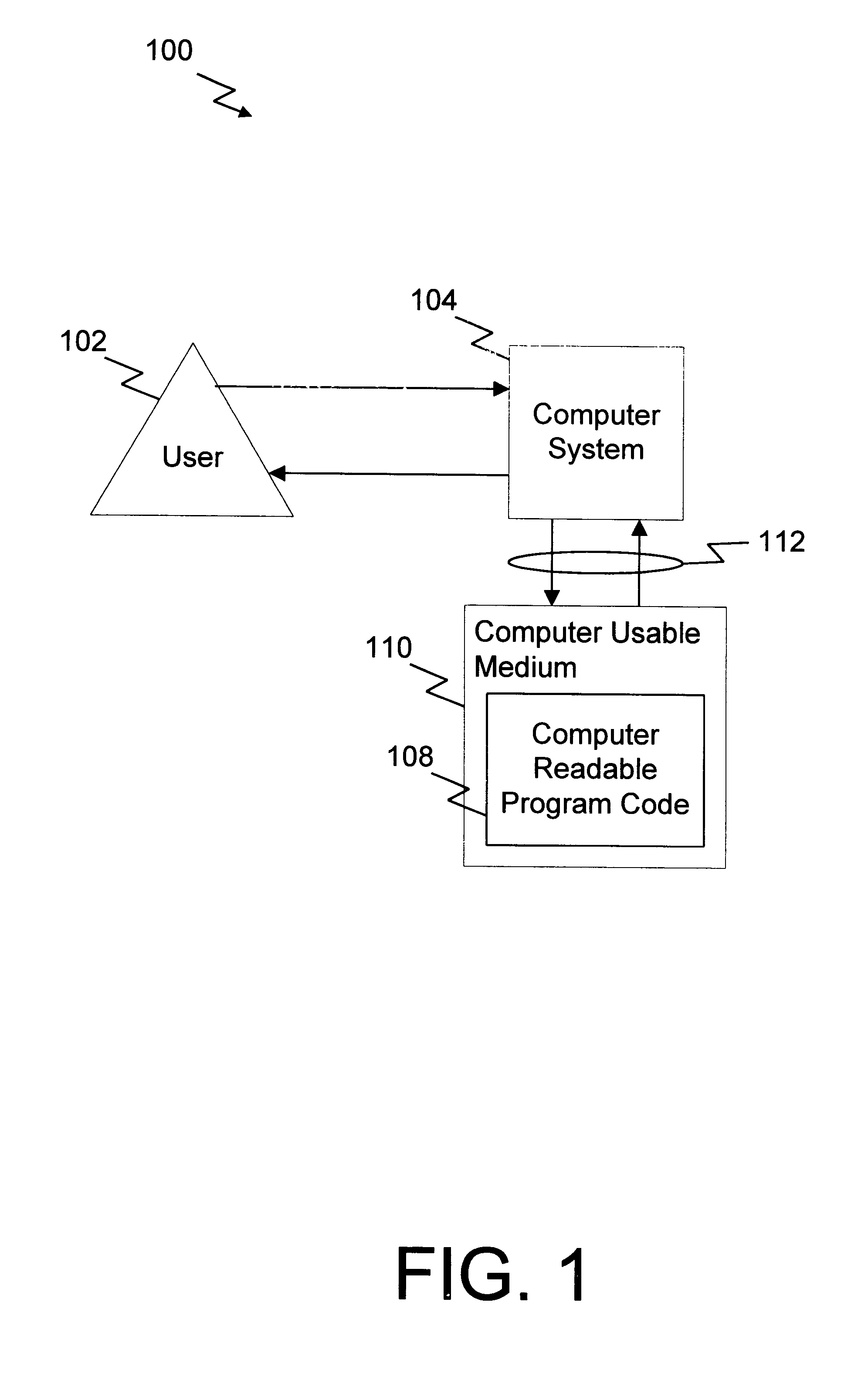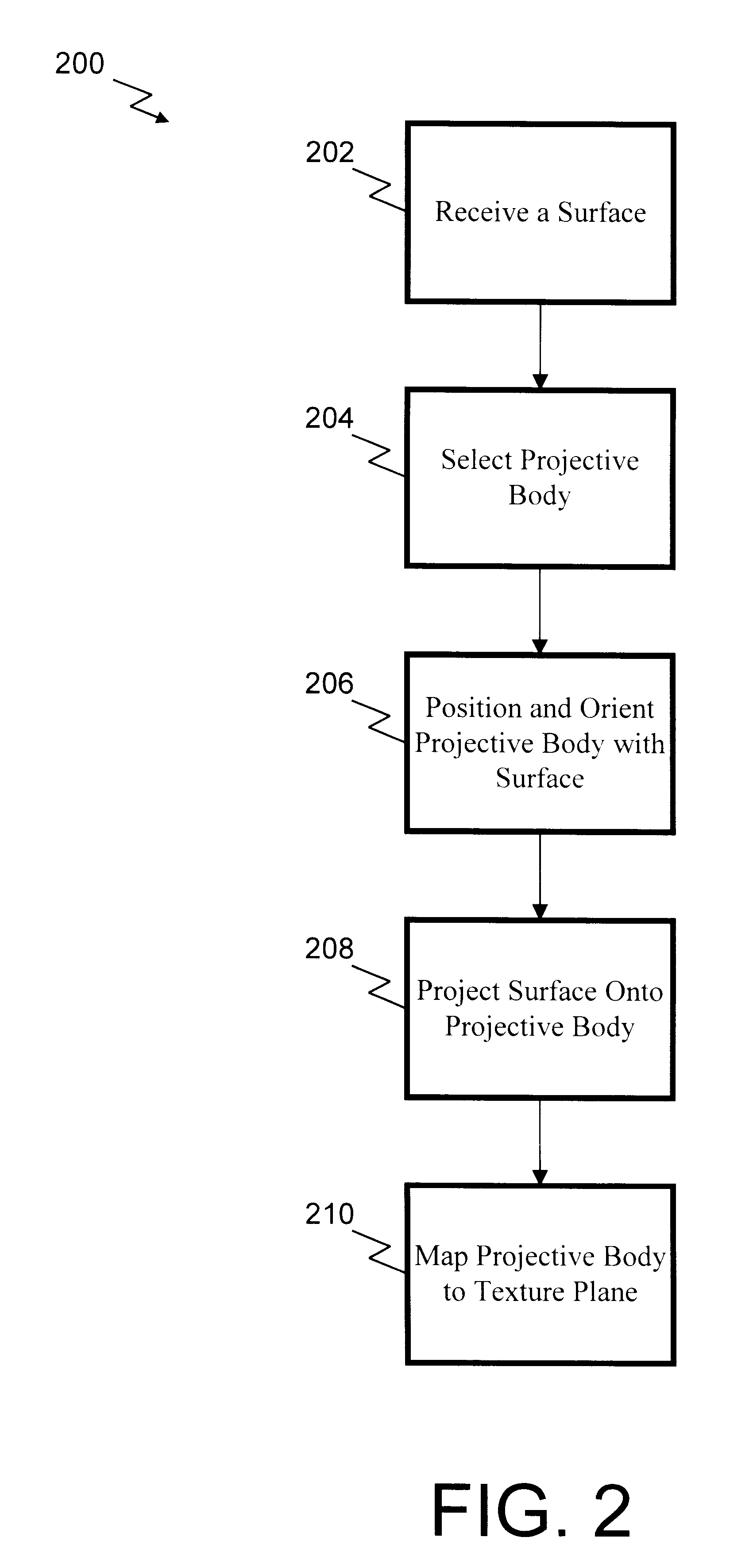Ellipsoidal projection mapping
a projection mapping and ellipsoidal technology, applied in the field of computer graphics, can solve the problems of poor texture mapping, poor texture mapping, and high degree of distortion of conventional projection projection bodies, and achieve the effect of improving the accuracy of projection projection
- Summary
- Abstract
- Description
- Claims
- Application Information
AI Technical Summary
Benefits of technology
Problems solved by technology
Method used
Image
Examples
Embodiment Construction
Overview of the Environment
FIG. 1 is a block diagram of a digital computer environment 100 within which the present invention is used. A user 102 interacts with a computer system 104 according to conventional user interface techniques. The present invention is preferably implemented as computer readable program code 108 stored on a computer usable medium 110, accessed via a communication link 112. Computer system 104 operates under the control of computer readable program code 108.
Computer system 104 represents any computer system known to those skilled in the art with sufficient capability (i.e., both memory and processing power) to execute computer readable program code 108. Examples of computer system 104 include, but are not limited to, a microcomputer, workstation, or terminal connected to a central processor.
Computer usable medium 110 is any digital memory capable of storing computer readable program code 108. Examples of computer usable medium 110 include, but are not limited...
PUM
 Login to View More
Login to View More Abstract
Description
Claims
Application Information
 Login to View More
Login to View More - R&D
- Intellectual Property
- Life Sciences
- Materials
- Tech Scout
- Unparalleled Data Quality
- Higher Quality Content
- 60% Fewer Hallucinations
Browse by: Latest US Patents, China's latest patents, Technical Efficacy Thesaurus, Application Domain, Technology Topic, Popular Technical Reports.
© 2025 PatSnap. All rights reserved.Legal|Privacy policy|Modern Slavery Act Transparency Statement|Sitemap|About US| Contact US: help@patsnap.com



